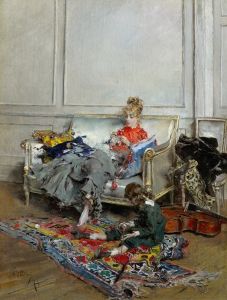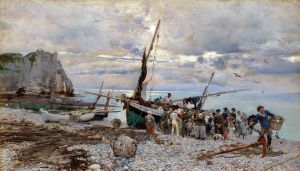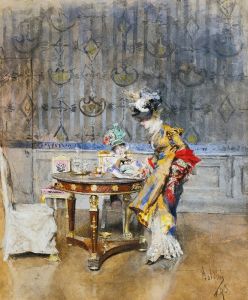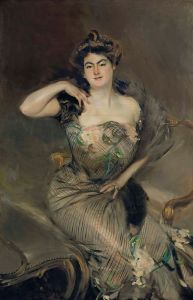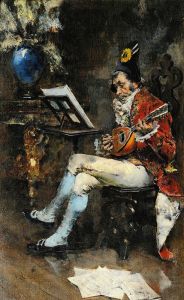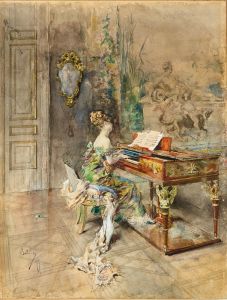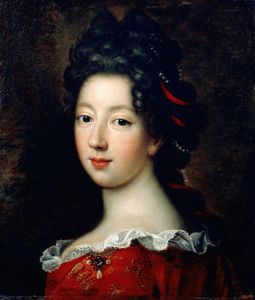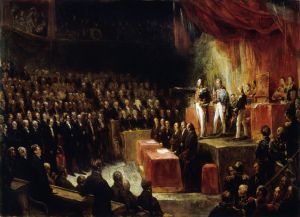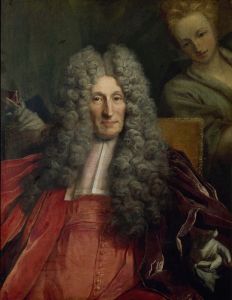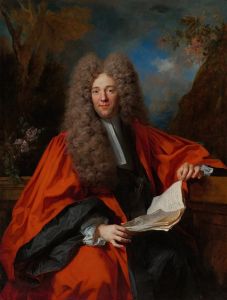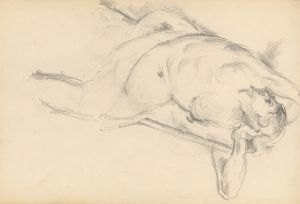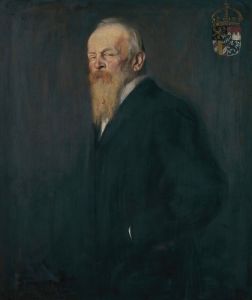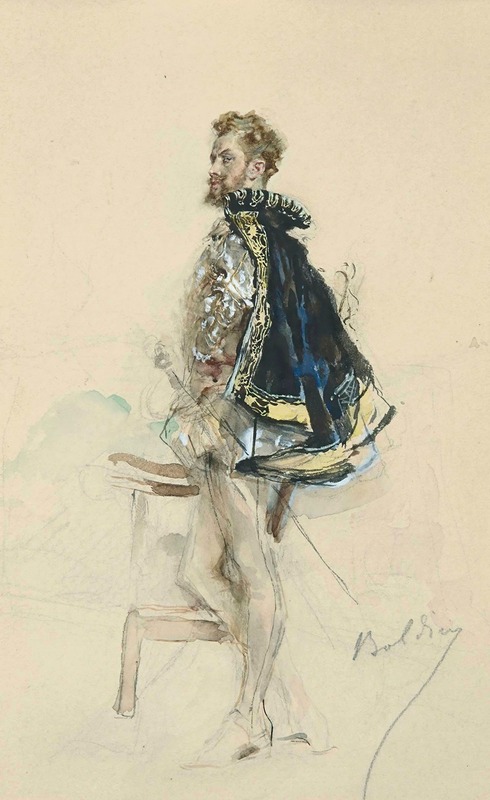
Raphaël Duflos dans le rôle d’Henri III
A hand-painted replica of Giovanni Boldini’s masterpiece Raphaël Duflos dans le rôle d’Henri III, meticulously crafted by professional artists to capture the true essence of the original. Each piece is created with museum-quality canvas and rare mineral pigments, carefully painted by experienced artists with delicate brushstrokes and rich, layered colors to perfectly recreate the texture of the original artwork. Unlike machine-printed reproductions, this hand-painted version brings the painting to life, infused with the artist’s emotions and skill in every stroke. Whether for personal collection or home decoration, it instantly elevates the artistic atmosphere of any space.
Giovanni Boldini, an Italian painter renowned for his dynamic and elegant portraiture, created the painting "Raphaël Duflos dans le rôle d’Henri III" in the late 19th century. Boldini was born in Ferrara, Italy, in 1842 and later became a prominent figure in the Parisian art scene, known for his vibrant brushwork and ability to capture the essence of his subjects. His work often featured members of high society, and he was celebrated for his ability to convey both the personality and the status of his sitters.
The painting "Raphaël Duflos dans le rôle d’Henri III" depicts the French actor Raphaël Duflos in the role of King Henri III of France. Duflos was a notable actor of his time, associated with the Comédie-Française, one of the most prestigious state theaters in France. Henri III, the historical figure portrayed by Duflos, was the King of France from 1574 until his assassination in 1589. His reign was marked by the Wars of Religion, a series of conflicts between Catholics and Huguenots (French Protestants), which deeply affected France during the late 16th century.
Boldini's painting captures Duflos in a theatrical costume, embodying the regal and somewhat flamboyant style associated with Henri III. The king was known for his interest in the arts and fashion, often depicted in elaborate attire, which Boldini likely emphasized to reflect both the historical character and the actor's interpretation. The painting is an excellent example of Boldini's skill in rendering textures and fabrics, a hallmark of his portraiture that contributed to his reputation as a master of capturing the luxurious lifestyles of his subjects.
Boldini's technique involved loose, flowing brushstrokes that created a sense of movement and vitality, setting his work apart from the more static portraits of his contemporaries. This approach is evident in "Raphaël Duflos dans le rôle d’Henri III," where the fluidity of the brushwork adds a dynamic quality to the portrayal, suggesting the theatricality of the performance and the historical drama of Henri III's reign.
The painting is part of Boldini's broader body of work that includes portraits of many notable figures of the time, such as writers, artists, and members of the aristocracy. His ability to capture the spirit of the Belle Époque, a period characterized by cultural flourishing and artistic innovation in Europe, made him one of the most sought-after portraitists of his era.
"Raphaël Duflos dans le rôle d’Henri III" exemplifies Boldini's contribution to portrait art, blending historical representation with the lively and expressive style that defined his career. The painting not only highlights Boldini's technical prowess but also serves as a cultural artifact, reflecting the intersection of theater, history, and visual art in the late 19th century.





